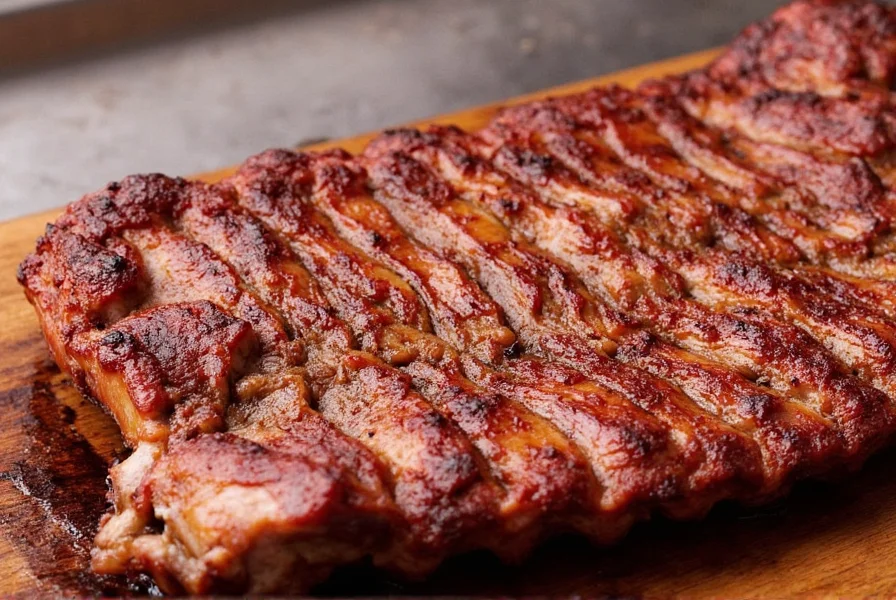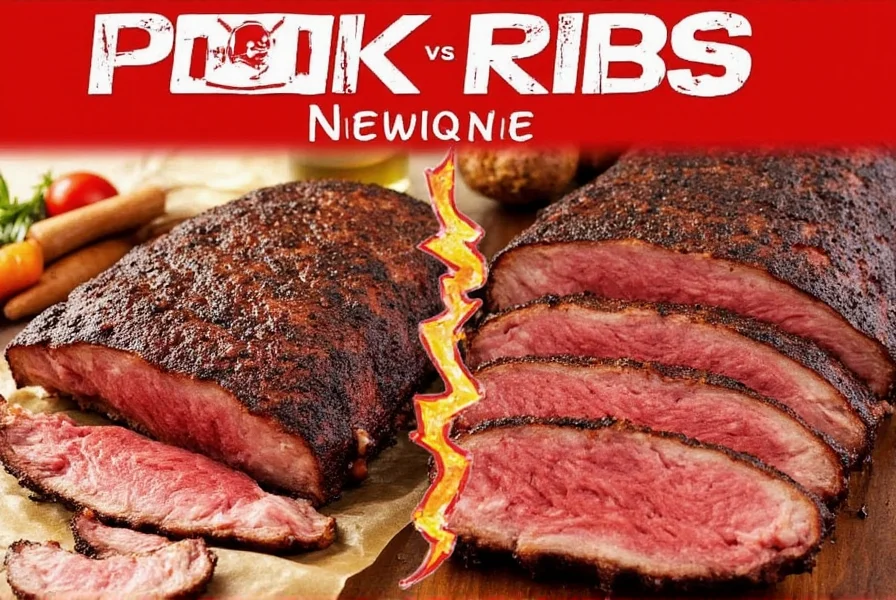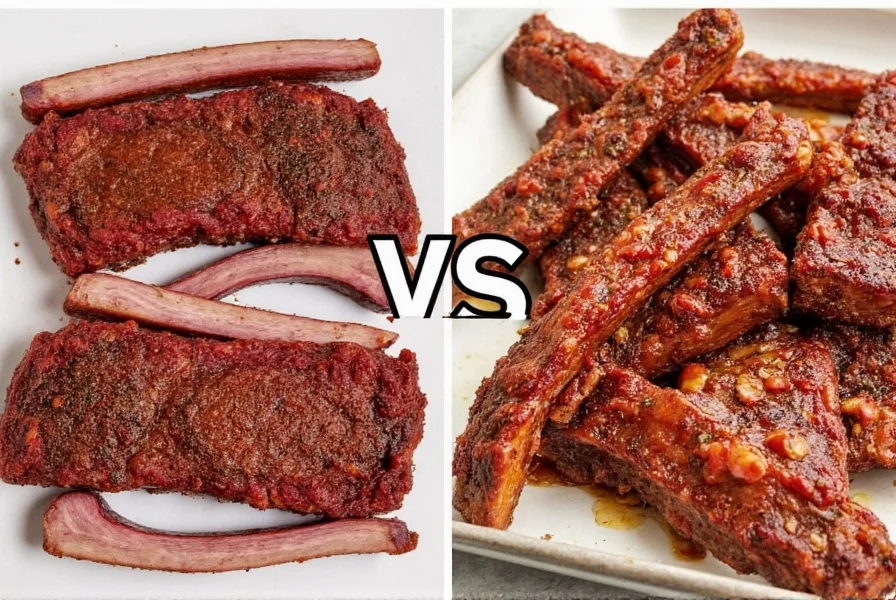Pork ribs and beef ribs differ significantly in flavor, texture, cooking time, and price. Pork ribs are sweeter, more tender, and cook faster, while beef ribs are meatier, require longer cooking, and have a richer umami flavor. This guide breaks down exactly how to choose the best ribs for your BBQ.

Table of Contents
- 1. Pork Ribs vs Beef Ribs: Key Differences
- 2. Best Spice Blends for Each Rib Type
- 3. Cooking Techniques for Perfect Ribs
- 4. Buying Guide: Selecting Quality Ribs & Spices
- 5. Final Recommendation: Which to Choose?
- 6. Frequently Asked Questions

| Feature | Pork Ribs | Beef Ribs |
|---|---|---|
| Flavor Profile | Sweet, mild, slightly fatty | Bold, rich, meaty, umami-packed |
| Fat Content | Higher fat content, more marbling | Denser meat with less visible fat |
| Cooking Time | 4–6 hours at 225°F (107°C) | 6–8+ hours at 225°F (107°C) |
| Texture | Tender, falls off the bone | Firm, chewy, holds shape |
| Price (per pound) | $3–6 | $6–12+ |
1. Pork Ribs vs Beef Ribs: Key Differences
When deciding between pork and beef ribs, consider your cooking time, budget, and flavor preferences. Pork ribs are ideal for quick, sweet BBQ dishes, while beef ribs deliver a hearty, protein-rich experience for special occasions.

2. Best Spice Blends for Each Rib Type
Pork Ribs
- Brown Sugar & Paprika: Creates caramelized crust without overpowering sweetness
- Garlic & Onion Powder: Enhances savory depth
- Apple Cider Vinegar: Spritz during cooking for moisture retention
Beef Ribs
- Coffee & Cocoa Powder: Adds complex bitterness that balances richness
- Chili & Black Pepper: Provides heat without masking meat flavor
- Smoked Salt: Boosts umami without additional liquid smoke

3. Cooking Techniques for Perfect Ribs
Pork Ribs
- Use the "3-2-1 method": 3 hours unwrapped, 2 hours wrapped in foil, 1 hour unwrapped with sauce
- Internal temperature: 195–203°F (90–95°C)
- Rest 15 minutes before serving for juicier results
Beef Ribs
- Smoke at 225°F (107°C) for 6+ hours until probe-tender
- Apply dry rub 12 hours before cooking for maximum flavor penetration
- Use the Texas Crutch only after bark formation to avoid steaming

4. Buying Guide: Selecting Quality Ribs & Spices
Rib Selection
- Pork: Choose St. Louis cut for uniform thickness
- Beef: Opt for plate short ribs for best meat-to-bone ratio
- Check freshness: Bright pink color, no slimy texture, no off-odors
Spice Quality Tips
- Buy whole spices and grind fresh for maximum potency
- Store in dark glass jars away from heat sources
- Replace ground spices every 6 months for optimal flavor
| Product | Description | Best For |
|---|---|---|
| OZARK MAGIC BBQ Rub | Brown sugar, smoked paprika, garlic blend | Pork ribs |
| STEEL CITY SPICE Co. Carnivore Blend | Coffee, cocoa, chili, smoked salt | Beef ribs |
| SPICE WARRIOR Premium Sea Salt | Adjustable coarse grind for finishing | Any grilled meat |

5. Final Recommendation: Which to Choose?
Choose pork ribs for quick, sweet, tender BBQ meals with minimal time investment. Opt for beef ribs when you want a bold, meaty experience for special occasions and have 6+ hours to cook. Both deliver exceptional results when prepared with the right techniques and spices.

6. Frequently Asked Questions
Q: Which is better, pork ribs or beef ribs?
A: Neither is objectively better. Pork ribs are ideal for quick, sweet BBQ meals with tender texture. Beef ribs offer richer flavor and meatier bite but require longer cooking. Choose based on your time, budget, and flavor preferences.
Q: What's the main difference in cooking time?
A: Pork ribs cook in 4–6 hours, while beef ribs need 6–8+ hours. This is due to beef's denser muscle structure requiring longer breakdown of connective tissue.
Q: Can I use the same rub for both?
A: No. Pork ribs benefit from sweeter rubs with brown sugar and fruit notes. Beef ribs need bolder spices like coffee, cocoa, and smoked salt to complement their rich flavor profile.
Q: How do I know when ribs are done?
A: Pork ribs should bend easily when lifted with tongs and meat pulls cleanly from the bone. Beef ribs need an internal temperature of 203°F (95°C) and should feel tender when probed with a thermometer.











 浙公网安备
33010002000092号
浙公网安备
33010002000092号 浙B2-20120091-4
浙B2-20120091-4